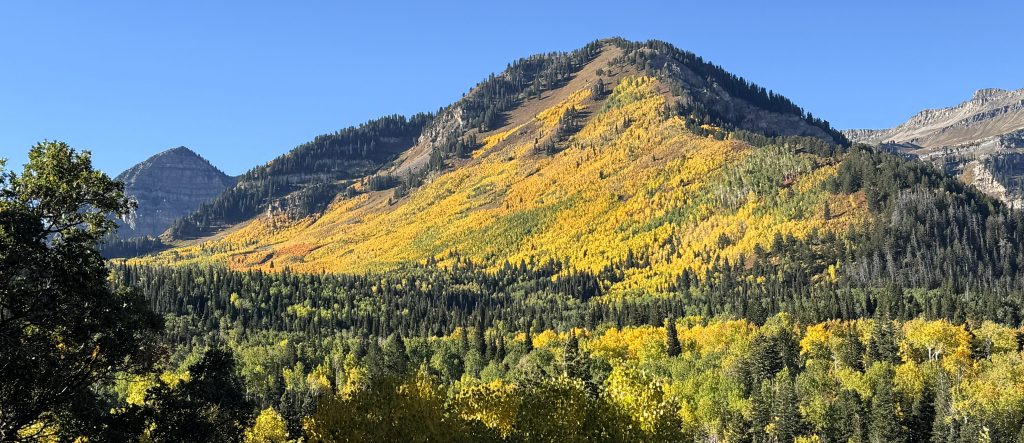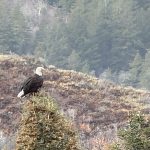
“And whatsoever Adam called every living creature, that was the name thereof.” — Genesis 2:19
We don’t always see, hear, or smell what others once did. Those who named plants, though, must have. They lingered long enough to catch the quiver, the sting, the fragrance. A name becomes a shorthand for attention—a memory pressed into language.
Every fall, it’s hard not to notice quaking aspens as they briefly burst into yellow before dropping their leaves. I recently found myself standing solo in a sacred grove of yellow giants as the wind swept down the canyon. I could hear the gust coming toward me, then surround me, then pass. Eyes closed, I could have still tracked the wind as it moved along.
The word quaking isn’t fanciful. An autumn wind wakes each tree in turn. Leaves shimmer—silver to green to silver again—before settling as the gust slips down the draw. To me, it’s just motion. To someone listening closely, it was quaking. The name carries the sound of the mountain itself.
The Latin names go further. Aspen is Populus tremuloides—literally, trembling poplar. Rabbitbrush, with its bright late-summer bloom, was christened Chrysothamnus nauseosus—“golden shrub that makes you sick.” Take a whiff and you’ll see why. Monkshood, Aconitum, carries the memory of its poison, yet its bloom resembles a hooded friar—perhaps a touch of monastery mischief.
And fireweed—Chamerion angustifolium—the first flower to return after wildfire. A truth you might not learn from one fire, or even two, but from generations watching the land heal. These names hold more than labels; they hold experience.
Some names sting as much as they describe. Urtica dioica—stinging nettle—translates to “two-housed nettle that burns.” A brush of its leaves can raise a welt in seconds, though steeped in water or tea it soothes the very pain it causes. Others are tender: forget-me-not, Johnny-jump-up, sweet alyssum. The people who coined these weren’t scientists but gardeners, shepherds, and children—naming what they loved or what lingered.
Common names are democratic, shaped by those who worked the soil. Scientific names are formal, shaped by scholars seeking precision. Indigenous names often go deeper still. The Navajo call aspen tsin diilyéhe—“rock tree,” for its pale bark gleaming on the mountainside. The Lakota call sage peží hóta, “grey plant,” used in ceremony and cleansing. These names speak less of description than of relationship—what the plant gives, how it’s used, where it belongs.
To name is to bear witness.
And what do we notice now? Often just the color, maybe the season—rarely the scent or texture that pressed itself upon earlier generations. We move too quickly to feel nauseous from rabbitbrush or to hear the leaves as quaking rather than noise. Few of us know the taste of willow bark when chewed—once medicine for pain—or the resinous spice of juniper berries crushed underfoot.
Modern science still names. Each year, thousands of new species are cataloged, their Latin labels tucked into the vast archive of human noticing. But the act remains the same: someone knelt down, looked closely, and wrote memory into words.
The names endure. They remind us that every living thing has more facets than our hurried senses catch. A name is an invitation to slow down—to notice as someone once noticed.
Maybe that’s why the aspen still quakes, the rabbitbrush still nauseates, the monkshood still warns, the nettle still stings, and the fireweed still returns. The names outlast us because the noticing does.
And if we’re lucky, when the wind comes down the mountain, we’ll pause long enough to hear it not merely as motion, but as trembling—quaking, whispering—a language older than our own.





